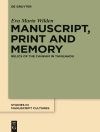This volume, the first of a two volume set, addresses three major areas in response to the post-Anthropocene: childhood, environment and indigeneity. Each of these areas is broadly addressed in relation to the concerns that have arisen both theoretically and educationally. The author terms these to be encounters as each area presents a particular problematic when addressing the phase change that the planet is undergoing where the anthropogenic labour of global humanity is contributing to climate change, endangering our very existence. There has been a concerted effort to overcome the nature-culture divide in education. The author reviews this development in the first section where there has been a particular emphasis placed on childhood education. In the second section he turns to the pedagogical theories that are attempting to overcome this same divide in environmental and science education. The last section attempts to bring into the conversation the vast literature on Indigeneity and their attempts to revise traditional education to meet these extraordinary times.
İçerik tablosu
1. Ruminations on the Pedagogical Posthuman Landscape.- 2. Previewing Post-Anthropocene Themes.- Part I The ‘Last’ Child Standing: Post-Anthropocene Pedagogy.- 3. The Figure of the Child.- 4. The Queer Child as the Nonhuman Other.- 5. The Children of the Post-Anthropocene.- 6. Variations on the Posthuman Child.- 7. Whiteheadian Excursions and Worries.- Part II Becoming Indigenous in the Post-Anthropocene.- 8. Preliminaries: Mapping Tensions.- 9. Becoming Soil.- 10. Decolonizing the North.- 11. Gaian-Global War.- 12. Pedagogy in and Amongst Magick, Cosmology, Animism.- 13. Raising Difficult Questions.- 14. Environmental Education, Indigeneity, and Its Challenges.
Yazar hakkında
jan jagodzinski is Emeritus Professor of Art and Media Education in the Faculty of Education, University of Alberta, Canada. His is the author of twenty book titles and the series editor for Palgrave Studies in Educational Futures.












